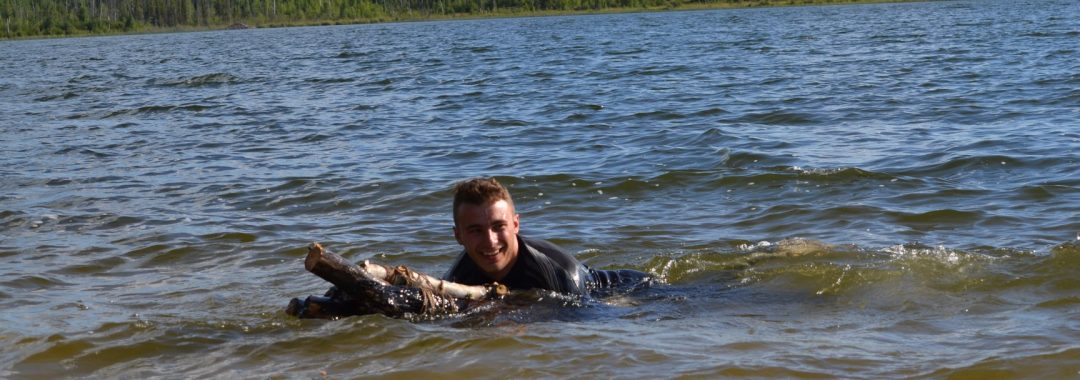Abstract:
- The introduction of coarse woody habitat has been a widely adopted management practice for restoring and enhancing freshwater aquatic ecosystems. Although responses of aquatic fish and invertebrate communities have largely been documented for lotic systems, benefits for lentic ecosystems have been mostly unevaluated.
- We tested the responses of fish populations to coarse woody habitat structures through a Bayesian modeling approach in a northern boreal lake in Alberta, Canada by enhancing a stretch of littoral zone with low structural complexity through introduction of coarse wood bundles and whole tree structures. The study site was split into three treatments, a Spaced treatment (structures 30 m apart), a Clustered treatment (structures 15 m apart), and an unaltered area (Control).
- Catch per unit effort and Catch per unit area data were collected over 2 years and posterior model predictions showed an increase in habitat use of the enhanced areas by spottail shiner – Notropis hudsonius; northern pike – Esox lucius; white sucker – Catostomus commersonii; brook stickleback – Culaea inconstans. No probable effect on overall fish condition, measured in Relative Weight, was linked to the enhancements.
- Across the two-year study, wood bundles degraded faster compared to the whole tree drops, coinciding with leveling off catch per unit effort and catch per unit area predictions near wood bundles, although catch predictions increased near the whole tree structures. Structural degradation set in as early as 1 week post construction for wood bundles and was mostly related to anchoring aspects.
- Results from our study provide evidence for the benefits provided by coarse woody habitat within northern boreal lake systems. They furthermore highlight the short-lived nature of wood bundles built with biodegradable substances. Methodologically our results offer evidence on the feasibility and utility of predictive modeling frameworks in addressing pseudoreplication and providing informative value for ecological studies.
Citation: Theis, S., Ruppert, J. L. W. and M. S. Poesch. (2023) Coarse woody habitat use by local fish species and structural integrity of enhancements over time in a shallow northern boreal lake assessed in a Bayesian modeling approach. Ecological Solutions and Evidence 4(2): e12200.
Also Read:
*Lab members: Sebastian Theis, Jonathan Ruppert and Mark Poesch. Check out opportunities in the lab!

